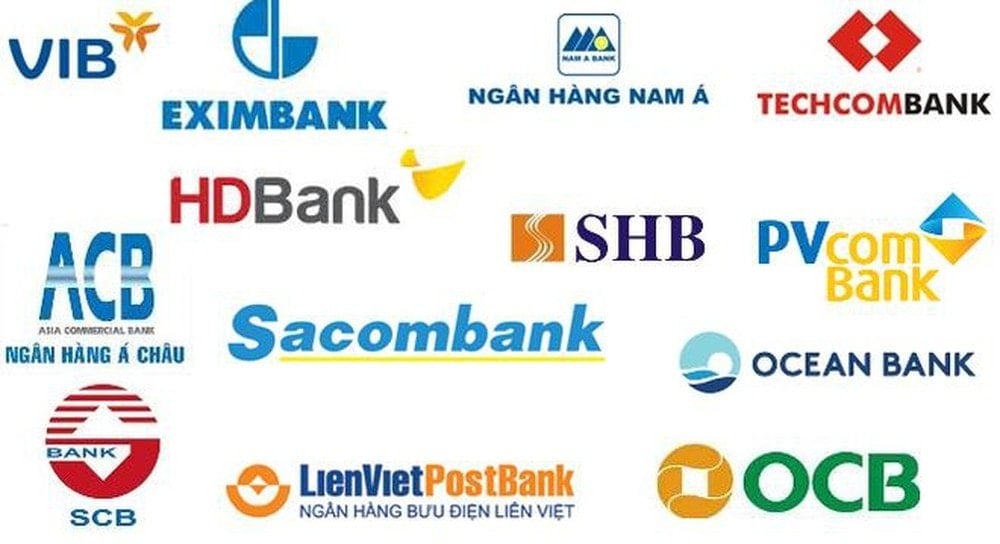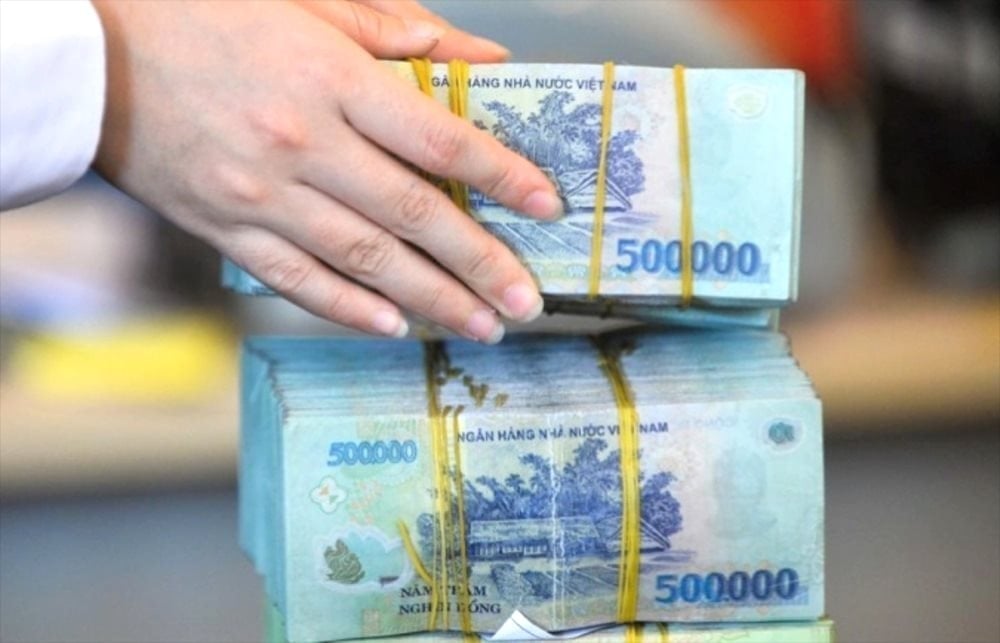The race to increase charter capital in the banking industry is entering a climax when a series of banks have been approved or are preparing to implement plans to increase capital by thousands of billions of VND. This is not only an inevitable trend in the context of increasing pressure to increase capital adequacy ratio (CAR), digital transformation and credit expansion, but also an urgent requirement to ensure competitiveness and system safety.
Race to increase charter capital: Exciting from the beginning of the year
Since the first months of 2025, the race to increase charter capital in the banking industry has become more exciting. The main reason comes from the requirement to boost credit growth at 16% in 2025, an ambitious goal to support capital flows for an economy that is recovering strongly after global fluctuations.
To achieve this goal, commercial banks are forced to improve their financial capacity, in which increasing charter capital is the optimal and urgent solution. Accordingly, banks deploy a variety of capital increase methods: issuing shares to pay dividends, private placement, issuing shares to foreign investors or issuing bonds to supplement medium and long-term capital.

Notably, by the end of July 2025, many banks had been officially approved by the State Bank for plans to increase charter capital with a scale of up to thousands of billions of VND.
Specifically, the State Bank recently approved Saigon - Hanoi Bank to issue shares to pay dividends in 2024 at a rate of 13%, thereby increasing its charter capital from VND 40,657 billion to VND 45,942 billion. Accordingly, this bank continues to maintain its position in the top 5 private joint stock commercial banks with the largest charter capital in the system.
Previously, the State Bank also approved Vietbank to increase its charter capital by a maximum of VND3,781 billion through two share issuances, raising its total charter capital to over VND10,919 billion. At the same time, National Citizen Commercial Joint Stock Bank was also approved to increase an additional VND7,500 billion through private issuance, raising its charter capital to VND19,280 billion.
Some other banks such as VIB also had their capital increase plan approved by the State Bank from VND29,791 billion to over VND34,040 billion; VietABank increased by VND2,764 billion from equity capital; or ACB increased by nearly VND6,700 billion through issuing shares to pay dividends, bringing its charter capital to over VND51,366 billion.
Many commercial banks in the system are also ready to increase capital.
Accordingly, not only the banks approved by the State Bank, but also a series of other banks have prepared plans to increase capital this year according to the resolution of the General Meeting of Shareholders.
First, Nam A Bank aims to increase its capital from over VND13,700 billion to over VND18,000 billion through paying dividends in shares and issuing ESOP shares to employees. Meanwhile, VietinBank, one of the joint stock commercial banks in the Big 4 group, also plans to issue nearly 2.4 billion shares to pay dividends in shares at a rate of 44.64%, thereby increasing its charter capital to VND77,671 billion.

This excitement creates a vibrant and fiercely competitive picture in increasing capital in the entire banking system. According to many financial experts, increasing charter capital is not only a subjective desire of banks but also a mandatory requirement to ensure system safety according to international standards.
Dr. Nguyen Huu Huan, Ho Chi Minh City University of Economics, said that despite continuous capital increases in recent years, the capital adequacy ratio (CAR) of Vietnamese banks is still significantly lower than the average in the ASEAN region, especially when Vietnam is moving towards higher standards of financial safety.
Dr. Chau Dinh Linh, lecturer at the Banking University of Ho Chi Minh City, assessed that capital increase is becoming increasingly urgent in the context that banks must meet Basel II standards, moving towards the roadmap of applying Basel III with higher requirements on risk management and financial capacity.
It is worth noting that currently, many banks are still struggling to meet the minimum CAR level according to Circular 41/2016/TT-NHNN, while the State Bank is preparing to raise the CAR standard to 10.5%, putting great pressure on banks, forcing them to quickly supplement charter capital.
Having large charter capital will be a competitive advantage in the digital age.
Not only meeting safety standards, large charter capital also helps banks increase their competitiveness in the increasingly fierce financial and banking market.
In particular, in the era of digital transformation, banks need to invest heavily in technology, upgrade systems, develop digital banking, automate processes and improve customer experience. All of these require large financial resources.
In addition, large charter capital also helps banks expand their scope of operations, increase credit limits, increase strength in M&A deals and enhance their reputation with domestic and foreign investors and partners.
With the recent increase in charter capital of banks, the charter capital rankings have undergone significant changes. As of July 2025, Vietcombank is leading the system with a charter capital of up to VND 83,557 billion, followed by VPBank (VND 79,339 billion), Techcombank (VND 70,450 billion), MB (VND 61,022 billion) and BIDV (VND 57,004 billion), the next positions belong to VietinBank, Agribank, ACB, SHB and HDBank.
However, this ranking will change dramatically in the coming time when a series of capital increase plans are successfully implemented. After completing the issuance of dividend shares, VietinBank can surpass BIDV to return to the top 3. SHB and ACB are also likely to rise, shortening the gap with the top banking group.
Increase capital for future development
In the context of the Government setting a target of at least 8% economic growth in 2025, the banking sector plays a key role in injecting capital into the economy. To ensure stable credit growth, banks must have sufficient financial “strength”, that is, charter capital and capital capacity must be firmly consolidated.
Increasing capital also helps banks be more proactive in controlling asset quality, risk management, and meeting the ratios required by the State Bank such as: capital safety ratio, ratio of short-term capital use for medium and long-term loans, ratio of lending to potentially risky sectors, etc.
In the future, when the financial market becomes increasingly integrated, banks that want to expand their operations internationally and cooperate with global financial institutions will also need a "passport" of strong financial capacity.
Accordingly, the race to increase charter capital in the banking industry is not only a manifestation of competition but also an objective requirement of reality. In a rapidly changing, volatile and increasingly competitive economic environment, banks have no choice but to strengthen their financial foundations to meet modern governance standards, expand sustainable credit and maintain their position in the market.
It is forecasted that in the second half of 2025 and into 2026, the wave of charter capital increase will continue to spread, along with significant changes in the structure of the banking market. This will be a pivotal period for Vietnamese banks to break through and approach international standards, contributing to building a safe, modern and sustainably developing financial and banking system./.
Source: https://baolamdong.vn/cac-ngan-hang-trong-cuoc-dua-tang-von-dieu-le-384317.html
























































![[Maritime News] Container shipping faces overcapacity that will last until 2028](https://vphoto.vietnam.vn/thumb/402x226/vietnam/resource/IMAGE/2025/7/30/6d35cbc6b0f643fd97f8aa2e9bc87aea)













































Comment (0)